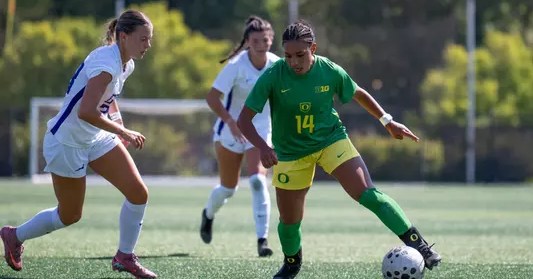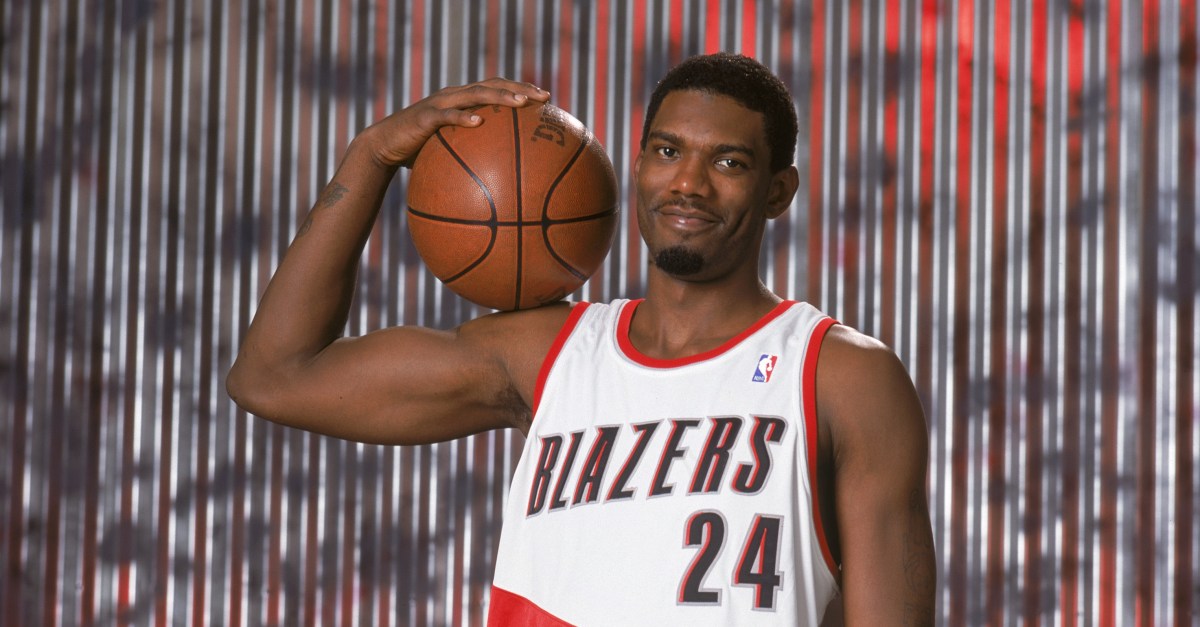Duck Tape: The 2025 Rose Bowl Oregon Ducks Ohio State Buckeyes College Football Playoff 2025
In his review of the second half of Ohio State’s season after their loss in Eugene, hythloday took a look at all the factors that could work out in the Buckeyes’ favor and work against the Ducks. Given the amount of talent on Ohio State’s roster, even a few of these switching from how they played out in the October game was likely to lead to an Oregon loss. What we saw in the Rose Bowl was a game in which every decision made by both teams accentuated the Buckeyes’ strengths and exposed the Ducks’ weaknesses. Combined with average to poor performances from a few key units and we got what we saw on New Years’ Day.
Based on the score, play calling, and body language of the players, there is a strong argument that this game went into garbage time when Ohio State went ahead 31-0 less than halfway through the second quarter. Simply for the sake of having enough plays to do an analysis and film study on I charted the entire first half. We were fortunate to have a full skycam broadcast for this game, so many of these clips use that angle for the primary illustration. Let me know in the comments if you like this angle when it is available or prefer the usual broadcast perspective.
UO Offense vs OS Defense: 2025 Rose Bowl
| Offense | Plays | Success Rate | Explosive Rate | Adj. YPP |
|---|---|---|---|---|
| Offense | Plays | Success Rate | Explosive Rate | Adj. YPP |
| Pass | 26 | 38.46% | 3.85% | 5.21 |
| Total | 37 | 29.73% | 5.41% | 3.97 |
Tristan Holmes and hythloday almond
With only 11 called rush plays in the first half, I have only included total play data and passing plays as a single category.
Going into the game the late scratch of WR #7 Even Stewart, who had been spectacularly effective at taking the top off of Ohio State’s defense in October, put the Ducks at a significant disadvantage. The possible answer was to change the roles of WR #15 Te. Johnson and WR #1 and have them run more vertical routes. Offensive coordinator Will Stein was unwilling to do so after the first deep shot was incomplete however. Even worse, Oregon insisted on running screens and runs to the edge that played into the hands of the Buckeyes’ athletes, particularly their elite safeties.
The biggest takeaway from this game is that this year’s offensive line was never a championship caliber unit. They had their struggles against Michigan and Penn State, but more rational play calls and a speed advantage from the Ducks’ ball handlers kept the offense moving. The Buckeyes’ best rush defenders are their four defensive linemen, but their linebackers have some weaknesses in play recognition. Instead of running plays designed to get the linebackers to choose the wrong gap, Oregon consistently challenged the front 6 directly. Combined with being able to keep safeties within 10 yards of the line of scrimmage, the result was one single successful called rushing play before halftime. Here is a representative sample of rushing plays before the garbage time cut off.
- (0:00) – On their first offensive snap of the game Oregon tries to establish the run with two TEs in the game. The Ducks are in their TACO alignment with LT #76 Conerly lined up outside of RT #65 Cornelius. The play is meant to get around the edge toward the heavy alignment, but watch how quickly the play side safety OS #2 recognizes the play and is able to get to the line of scrimmage. He beats #76 to the edge, but it doesn’t matter as the double team from RG #55 and RT #65 can’t keep the DT from stretching the play horizontally or the linebacker from making the tackle. Even if the back gets away, the perimeter blocking from the receivers has turned their defenders free.
- (0:07) – This was the only successful called rush in the first half. The back, #20 James, wants to get through the B-gap between the LT and LG. When he sees the DT is in his way he bounces the play outside. The linebacker has stepped inside and reacts late to James’ move, giving him space to get to the edge.
- (0:15) – Another outside zone run to the offense’s right, but from a standard formation. The slicing TE #3 lunges at the backside DE who steps through the attempt and is free to pursue the ball carrier. The center #72 gets his head playside of the DT, but seems distracted by something on the sideline and never tries to turn his defender backward to open a hole. When James is turned backward as the RG #55 cannot clear the DE, both pursuing defenders combine for the tackle.
- (0:23) – Another outside zone play runs into trouble. The right guard, now #74 who has rotated in, gets confused when the DE slants inside the RT #65. He needs to get to the safety OS #2 as soon as he can to give RB #6 Whittington a chance. That same safety makes first contact, but the backside linebacker OS #6 is so fast he is able to assist.
- (0:29) – By alignment, the center #72 is assigned to a double team with the RG #74. But when the DT to aligned to the offense’s left slants inside he needs to pick him up. Instead the OS #91 is turned loose and Whittington has nowhere to go.
Dillon Gabriel had almost everything working against him in the passing game. The inefficiency of the run game routinely put the offense behind the chains. Ohio State’s more rational pass rush strategy meant he was facing more pressure than usual. Finally, Stein’s refusal to take the top off the defense meant he had little room to fit the ball to his receivers. It is no surprise the passing game struggled in the face of all this, but the veteran QB sometimes was able to make chicken salad out of you-know-what. Here is a sample of successful passing plays:
- (0:00) – On this third and long play, the Buckeyes are keeping 8 back in coverage, including three safeties assigned to help on any deep routes. When the wide receivers all run deep routes it creates just enough space for TE #3 Ferguson to catch an underneath throw and turn upfield for a desperately needed first down.
- (0:12) – Ohio State is caught blitzing so there are only five defenders against four receivers in the pattern. When TE #3 Ferguson runs a crosser from the offense’s left to right responsibility for the in route by WR #1 Holden behind him falls to the deep safety, who is too far away to make the play. The protection holds up well enough against the blitz, but Gabriel doesn’t step down on the throw and the ball is low. Fortunately Holden goes down to get it for him.
- (0:30) – Another third down and the Buckeyes only rush 3. The plan works at first as all the routes are well covered and pressure allowed by RT #65 forces Gabreil to escape the pocket. He moves to find a throwing lane, and though the ball is a bit behind #3 TE Ferguson makes the catch..
- (0:39) – It is now third and very long. Ohio State backs out seven in coverage leaving it to their front four to get pressure. The protection holds up long enough this time for WR #1 Holden to find a hole in the zone coverage downfield. Though he stepped out of bounds, because the corner OS #1 put his hands on the receiver this counts as a force out so Holden can re-establish himself in the field of play to make the catch.
With the run game struggling the only way to loosen the Buckeyes’ coverage was to call one-read deep shots to get them to back out their safeties to open up the underneath game. Oregon only tried to do so once early on, #15 Te. Johnson was open on a go route but the ball was underthrown. Rather than try again later (save for quick heave during the last two minutes of the first half), Stein essentially surrendered the game by insisting on short throws and screens. Below are some examples of failed passing plays:
- (0:00) – Gabriel goes through the reads and selects the correct target as TE #88 Herbert is coming open on the crosser. His protection lets him down though, as LT #76 lets a defender get his hand on the quarterback’s throwing arm. If he had felt the pressure, there is a lane to scramble through between the RG and RT.
- (0:17) – Neither hythloday nor I can figure out what this play design is supposed to be, let alone why it would be called on third and long. The ball is thrown five yards downfield, so the failed block attempted by TE #3 would be a penalty if it had succeeded. There is no way the RB #20 can get to the safety by running a wheel route. Even if one forgives those issues, there is no room for WR #1 to turn upfield, and besides all of that the deep safety in this coverage could make the tackle short of the sticks.
- (0:25) – I’ve been a big proponent of interior screens to the tight ends, especially #18 Sadiq, all season, all season but Ohio State’s defenders are fast enough to counter them. The blocks downfield are well set up, but the defensive end is quick enough to bat the ball down. The only hope is for Gabriel to try to side arm this, a questionable proposition at best.
- (0:38) – There isn’t going to be a lot of room to fit the ball into WR #1 Holden on the drag route, and when Gabriel scrambles to escape the pressure coming from his right. There is too much ground to gain for him to run for it. The only chance is to drift left and try to get the ball away as quick as he can. The delayed release gives the safety OS #2 time to recover and break up the throw.
UO Defense vs. OS Offense: 2025 Rose Bowl
| Defense | Plays | Success Rate | Explosive Rate | Adj. YPP |
|---|---|---|---|---|
| Defense | Plays | Success Rate | Explosive Rate | Adj. YPP |
| Total | 33 | 36.36% | 27.27% | 11.29 |
Tristan Holmes and hythloday almond
Ohio State ran 15 rushes and 18 passes in the first half. Neither meets the threshold for a large enough sample size to isolate, so I have only included the composite statistics.
No reasonable observer, even one who was optimistic of Oregon’s chances in this game like myself, would have expected the Ducks’ defense to keep Ohio State’s offense completely in check. Though injury issues on the offensive line have hurt their run game, when they lean into their explosive passing game the Buckeyes offense remains one the best in the country. For all the criticism we have given him at times here at AtQ, OC Chip Kelly did an excellent job with the game plan leaning into his advantage going to his receivers deep. When he saw the Ducks making no changes to try to limit this, he stuck with it put the game out of reach.
Ohio State only had two explosive rush plays in the first half: one a poor angle by the Oregon safety leading to a touchdown and a play that included an uncalled holding penalty on their last drive of the half. There were enough short gains in rush games to put the Buckeyes behind the chains to keep drives contained with better pass defense. Here is a sample of successful rush defense:
- (0:00) – When the TE #88 comes in motion across the formation pre-snap, the defense shifts to compensate and Ohio State’s blocking isn’t good enough to compensate. The edge is sealed by OLB #44 Tuioti wrong-arming the pulling guard, DT #55 Harmon gets under his blocker, LB #2 is ready to take on the pulling TE, and LB #28 Boettcher is free to track down the runner.
- (0:06) – When the linebackers flow to the offense’s left to follow the pulling guard and tight end, it looks like a wide open hole is open for the running back when the DT #90 runs himself upfield and out of the play. Fortunately DT #55 Harmon tosses his blocker aside and makes the play.
- (0:13) – This sweep read has Kelly’s fingerprints all over it. The movement of the wide receiver coming from the offense’s right to left combined with the pulling linmen the other direction stresses the entire defense to defend the correct gaps. Buckeye’s QB Will Howard see’s OLB #10 Uiagalelei coming upfield to take the sweep man so he keeps the ball. Uiagalelei reacts and moves so quickly he catches the QB from behind. Even without such quick pursuit, #44 Tuioti has shed his blocker to stop this cold.
- (0:20) – Nickel back #3 Br. Johnson anticipates this play and moves to attack the mesh even before the snap. The defensive line and linebackers turn the play back to the offense’s right, where Johnson has come flying in to make the stop.
Before the garbage time cut off Ohio State only had two explosive runs: a long touchdown because of a poor angle by the safety and a fifteen yard gain on their last drive of the half. Other than that, most of their gains on the ground were modest, something the mint defense is built to endure. Some examples:
- (0:00) – The playside OLB #10 Uiagalelei does well to wrong arm the pulling guard. The inside linebacker #26 doesn’t get proper leverage and lets the back bounce outside to pick up three yards. That’s not a lot, but in this case it is enough for a first down.
- (0:08) – Ohio State has both of it’s excellent running backs off set in the backfield on this play. The Buckeyes goal is to turn the corner to the field. The defense is too fast to allow this, but poor tackling by DT #90 and NB #3 allows a five yard gain.
- (0:18) – With two tight ends to the offense’s right, the QB under center, and a 200 lb. wide receiver motioning into the formation, everything about this play screams run. The defense responds with nine defenders in position for rush defense. Linebacker #2 needs to play this from the inside of OS #2 but he steps outside and opens a lane. He does recover quickly to join the flock that prevents a bigger gain.
- (0:25) – With two tight ends (one in the slot to the right, one in the backfield), and a big lead to sit on, this is another obvious run. The Ducks are deployed to defend an inside run, so the offense has to feel good about calling a reverse to freshman-phenom OS #4 Smith. The corner to the play side #9 Reed does a superb job to set the edge and get off a block to limit the damage.
Oregon’s veteran secondary was at a significant athletic disadvantage against the Buckeyes receivers. The one weakness in Ohio State’s passing game is their pass protection given the injury issues they have had on the offensive line. When Howard is able to make quick throws, either short to playmakers in space or one read downfield, he has found success. When Oregon’s defense had any success against the pass, it was when the pass rush affected the play and they kept the ball in front of them. Here is a sample of successful pass defense:
- (0:00) – Howard’s first read is the deep post to the middle of the field, but with no other vertical routes the two deep safeties are able to take this away. His second read, a short hitch to the offense’s right, is also taken away. He doesn’t have time to get to the crosser coming open over the middle because DE #1 Burch has driven the right tackle backward and gotten his arms on the QB. Howard can only throw the ball away near his check down to avoid a sack.
- (0:15) – Oregon is playing it safe here and keeping their safeties deep, indeed the corners should be giving more cushion rather than being in press. If OS #4 Smith goes deep against CB #7 Muhammad on a sideline route this is probably a touchdown. Instead, Smith runs a crosser that Muhammad is in position to defend. Pressure from #1 Burch again doesn’t give Howard time to see the open receiver over the middle.
- (0:23) – This unusual formation, with both tight ends split out to the offense’s left and a receiver behind the running back in the backfield, is designed to get a one-on-one matchup to the far sideline. Fortunately CB #9 Reed maintains good position against the deep ball, and Howard doesn’t give his receiver a chance anyway. The cameraman can’t even make the catch.
- (0:44) – Howard sees his running back isolated on the inside linebacker on a wheel route and takes his shot. The defender, LB #28 Boettcher, gets adequate depth and is able to play trail technique to prevent the back from being able to adjust to the ball.
The most indefensible decision made by Oregon’s staff during this game was their insistence on playing tight coverage against the Buckeyes’ receivers. The previous game aptly demonstrated that the Ducks veteran 3* defenders could not run stride-for-stride with Ohio State’s elite athletes. The rational approach would be to back out the coverage and play with soft cushions to give a position advantage against deep routes. This would surrender easy 8-15 yard completions, but increase the number of plays needed to drive the field and increase the chances the offense would make a mistake or the pass rush would get home. Here is a sample of failed pass defense:
- (0:00) – There are multiple mistakes against this screen pass. On a strategic level, bringing the safety #5 down to play the run is a poor trade off against this offense. Better to keep him and the corner #9 backed out and live with the consequences. Once the play begins, nobody picks up #4 Smith coming across the formation and the single high safety isn’t fast enough to make a play.
- (0:20) – This defensive alignment makes much more sense given what the Buckeyes are capable of. There are defenders taking away deep routes, with the linebackers in coverage to take away interior throwing lanes and drive on underneath routes. This does leave a hole in the zone Howard uses for an easy conversion, but 15 yards given up is much better than 50. Next time #1 Burch might deflect the ball, and if the first read hadn’t been open #55 Harmon would have gotten a sack.
- (0:42) – A simulated pressure on third down isn’t a bad idea, but having CB #8 in tight coverage where the safety cannot help deep along the sideline. Howard knows where this ball is going before the snap so there is no time for the rush to affect the play.
- (0:59) – Two tight ends or not, playing a single high safety on second down with OS #4 on the field is a recipe for disaster. In this coverage the nickel #3 is responsible for the flat but there is no route in that area. The defender gets turned around in man coverage and it’s an easy six.
Share this content:















Post Comment